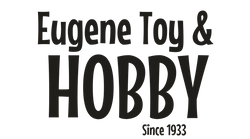Details:
There were three classes of 4-8-4 steam locomotives on the UP. UP 820-834 were built in 1939 as coal burners with 80-inch drivers and full 7 axle centipede tenders. The first conversion to oil started with 807 on March 10, 1946. Originally this was in response to the threat of a coal strike, but it enabled the FEF's to run for the first time down the oil burning South Central District to Los Angeles over Cajon Pass. All the FEF's were converted to oil by the end of 1946. UP began to paint passenger steam locomotives into a two tone gray paint during 1946. Red emergency MARS lights were added in 1947.
Roadnumber Features:
- Two-tone grey with Armour Yellow lettering and striping
- Oil Burner
- Drop Coupler
- Dual smoke stack
- Era 1946-Mid 1949
Locomotive Features:
- Illuminated number boards
- Metal handrails
- Builder's plates
- Adjustable cab windows
- Non-operating classification lights
- Blackened metal wheels
- Oil burner
- Accurate oil tender details
- Feedwater heater per prototype
- ATS cabinet per prototype
- Swing coupler pocket
- Double or triple smokestack per prototype
- Single or double generator per prototype
- Side rods colored to match the prototype
- Illuminated red signal light except on 2016 version of #844
- Boiler backhead with full details and printed gauges
- Synchronized chuff, whistle, bell, blow-down, air compressor, dyno and pop-off valve sounds
- User-controlled whistle, short whistle, bell, squeal, coupler crash, injector, water stop and light dimmer
- Individually-applied detail parts, including brass-painted bell and whistle, piping, valves, generator, steps, air pump, air tanks, reverser and coupler lift bar
- Front coupler pocket can be inserted to mount operating coupler
- Minimum radius: 22"
New Features:
- Dual cube speakers for great sound quality.
- Lighted firebox flicker effect with see-through firebox door.
- Upgraded headlight lighting with brighter LED.
- Improved loco-to-tender connection harness for increased durability and serviceability.
Sound Equipped Models Have:
- Tender-mounted DCC decoder with SoundTraxx Tsunami2 sound
- Dual cube speakers for optimal sound quality
- Sound units operate in both DC and DCC
- Full DCC functions available when operated in DCC mode
- Chuff, whistle and bell sounds work in DC
- All functions NMRA compatible in DCC mode
- Precision slow speed control
- Many functions can be altered via Configuration Value (CV) changes
- CV chart included in the box
Prototype Information:
In 1939, 15 FEF-2 class 4-8-4s, numbers 820 through 834, were acquired. They shared a family resemblance to the big Challengers and Big Boys. The FEF-2s were built as coal burners with single exhaust stacks, drop coupler pilots and "centipede" tenders that carried 25 tons of coal and 23,500 gallons of water. When they were rebuilt, they received double or triple exhaust stacks.
During the traffic crunch of World War II, ten more 4-8-4s of class FEF-3, numbers 835 through 844, were acquired. The FEF-3 boiler was slightly longer than the FEF-2; plus, the FEF-3 featured double exhaust stacks, cast pilots and cabinets on the tender. Within six months of delivery, they were fitted with "elephant ear" smoke deflectors. Several FEF-3s also received triple exhaust stacks.
All of the 4-8-4s were converted to burn oil after the Second World War. They also wore two-tone gray paint from April 1946 until the mid-1950s. While UP streamliners were all diesel powered, the FEFs worked the secondary trains such as the Pony Express and Overland as well as mail trains. At the time, those trains were usually quite long and consisted of heavyweight cars, requiring all of the power the FEFs could deliver.
Instead of retiring FEF-3 844 in the early 1960s, UP kept it for excursion service and renumbered it to 8444 to allow GP30 844 into the system by 1962. From the mid-1950s until 1987, FEF-3 8444 was painted in the black paint scheme. In September 1987, it was repainted into the two-tone gray scheme with yellow stripe and lettering. After returning to Cheyenne from the Los Angeles Union Station 50th Anniversary celebration in June 1989, FEF-3 8444 was renumbered back to 844. The two-tone gray paint lasted until September 1991.




